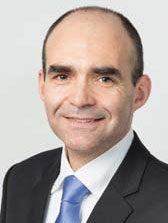Stéphane Dejean, the chief marketing officer at Kerlink, tells Fredrik Stålbrand, a senior analyst at Berg Insight, about Kerlink’s evolving positioning as a Network-asa- Service (NaaS) provider and its activities in the market for private low power wide area (LPWA) networks.
Fredrik Stålbrand: Could you start by giving us an introduction to Kerlink and outline your offerings for the LPWA market?

Kerlink
Stéphane Dejean: Kerlink was founded in 2004 by two engineers with strong expertise in radio frequency (RF) communications for the M2M market. The business was originally dedicated to addressing two IoT use cases – fleet management and smart metering, but Kerlink has continuously added new solutions to its portfolio. The company launched the world’s first LoRaWAN gateway in early 2014 and co-founded the LoRa Alliance together with partners in 2015. Today, we are one of the largest providers of infrastructure equipment for LoRaWAN IoT networks. We recently also enhanced our portfolio with valueadded services to streamline network operations and to support innovative business models and monetisation of opportunities in the IoT domain. In addition, Kerlink has been listed on the Euronext Growth Paris Stock Exchange since May 2016. We have quickly built a strong track record of LPWA deployments and serve many leading telecoms operators, as well as private network operators worldwide.
FS: During 2017, Kerlink organised its operations into two business units. What are the focus areas of these new business units?
SD: The evolution of our organisation was a strategic decision that we took to maintain Kerlink’s agility. We have separated our activities to accelerate our business transformation around services and applications. Kerlink Infrastructure Solutions now covers the portfolio of carriergrade network-related infrastructure, management solutions and professional services. Kerlink Advanced Services focuses on designing and deploying our reference design, device management and geolocation solutions. The portfolios of these business units are complementary, but the solutions can also be sold separately. For example, our geolocation solution can be deployed on top of a third-party LoRaWAN network. Openness of our solutions and interoperability are key for us.
FS: Have you added any products to your portfolio in the past year?
SD: On the infrastructure side, we extended our portfolio with the core network management solution Wanesy Management Center and an indoor gateway. The Wanesy Management Center is a very modular and complete solution that provides comprehensive tools for network monitoring and control via self-service portals and Application Programme Interfaces (APIs). The platform supports Kerlink’s Wirnet series of gateways, but is also compatible with third-party gateways. On the services side, we have added solutions for device management and geolocation, as well as the Kerlink reference design offering, which is a package of hardware, software, development tools and guidelines. These solutions help service providers and developers to design, bring-to-market and efficiently manage their fleets of connected objects. Geolocation is a strategic focus for Kerlink and we are convinced that it can add a lot of value to enterprises in a range of vertical industries.

Berg Insight
FS: Kerlink has set an aggressive revenue target of €70m for 2020, compared to about €25m in 2017. What is the company’s strategy to reach this target?
SD: It is built on a mix of increasing our global reach, adding value-added services to our portfolio, crystallising the appropriate ecosystem of partners like application-enablement platform providers, and targeting new types of prospects and segments. For example, the Kerlink reference design solution targets companies that are interested in integrating LoRa connectivity in their devices. We are also developing a partner programme and actively recruiting value-added resellers and system integrators to strengthen our sales channels. This will also enable Kerlink to better address the needs of local and regional partners. Over the past five years, the company has achieved a compound annual revenue growth rate of 62%, so we are confident of reaching our 2020 revenue target.
FS: How do the requirements differ between the two major customer groups that you serve – public telecom operators and private network operators?
SD: Let me start by clarifying the distinction between these two groups. Public operators comprise traditional mobile network operators such as KPN, Proximus, Orange and Tata Communications that we are supplying, but also newcomers, like cable operators and tower companies that are using this new technology to deploy networks and make the service publicly available. Since the technology uses unlicensed bands, companies don’t need a licence to deploy the network, which lowers the barriers to entry. Private network operators typically include large utilities and industrial companies and smart cities that are more focused on specific applications and use cases. While public telecoms operators require carrier-grade solutions along with robust network management services, private network operators deploy simpler solutions with a straightforward user experience.
FS: What solutions does Kerlink offer for private network operators?
SD: Kerlink’s one-stop-shop value proposition for private network operators encompasses turnkey IoT network solutions that enable companies or cities of all sizes to design and deploy their own IoT networks and manage their operation. We also offer professional support to help customers model and design scalable IoT networks, which significantly accelerates activation. In addition, our network management solution, Wanesy Management Center, supports multiple deployment options, including on-premises and SaaS. We have also formed a partnership with Microshare, a US-based IoT data management company, to complement Kerlink’s network offering with a highly scalable data collection, enrichment, storage and sharing solution that allows businesses to securely monetise their data.










